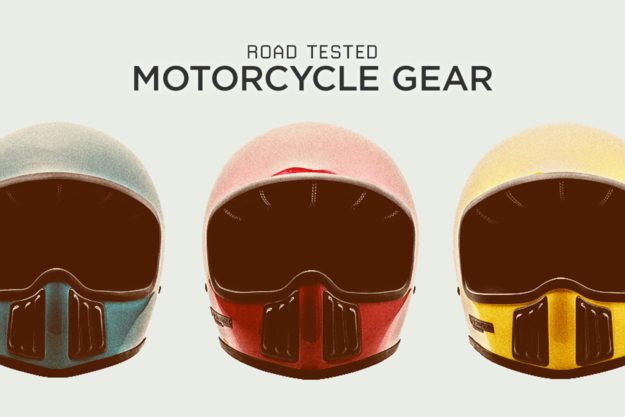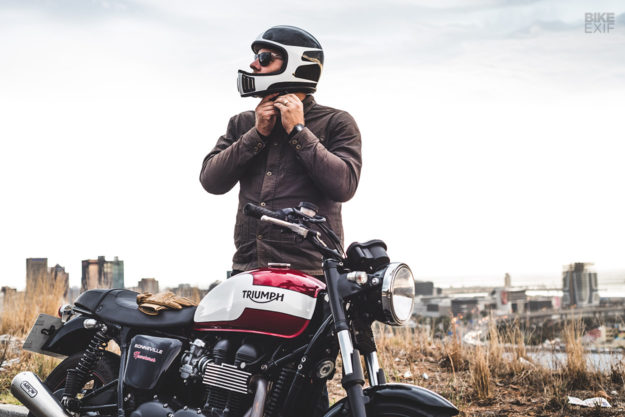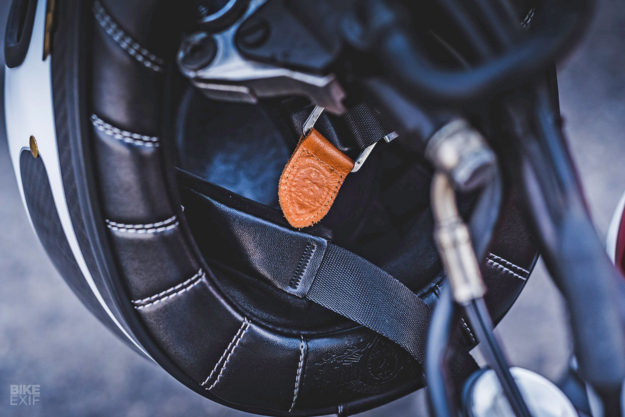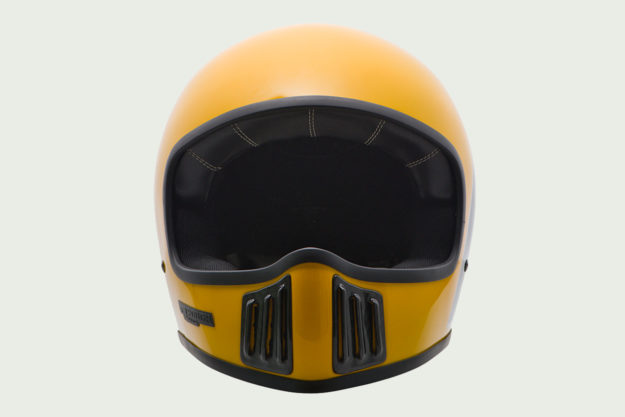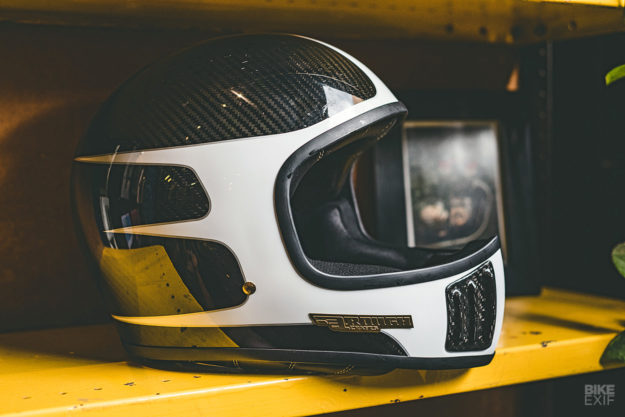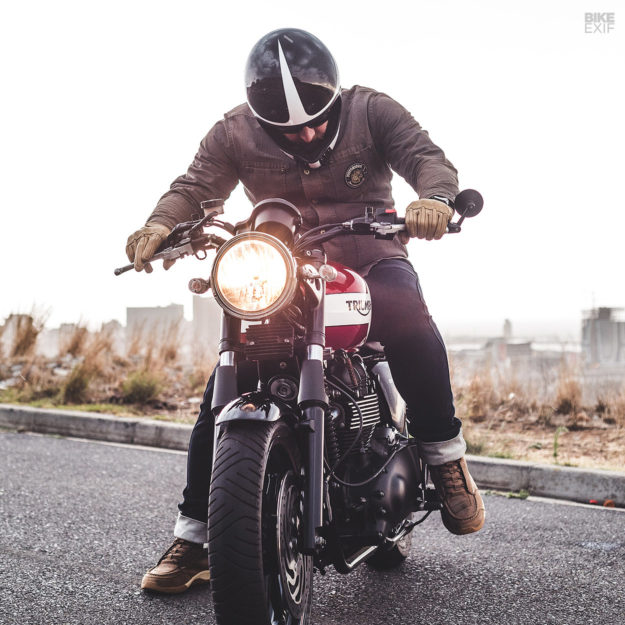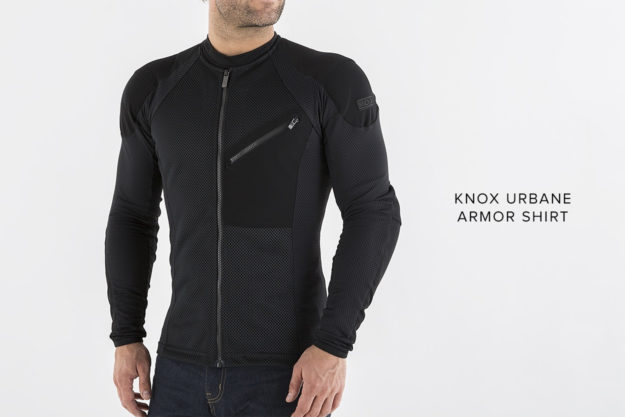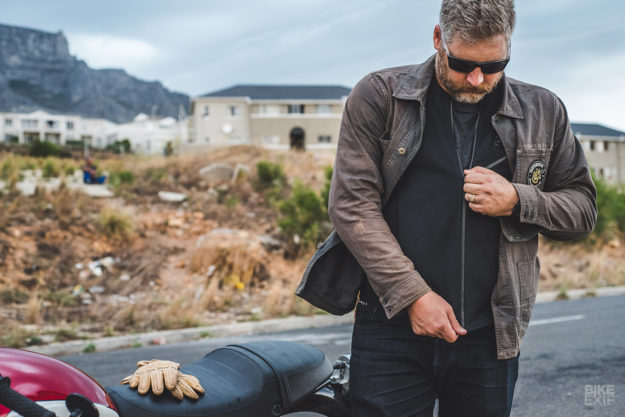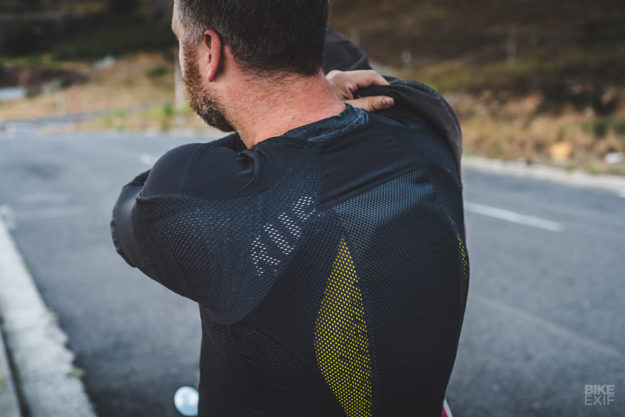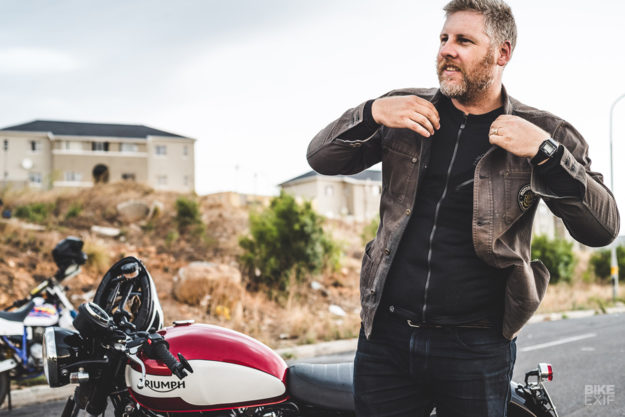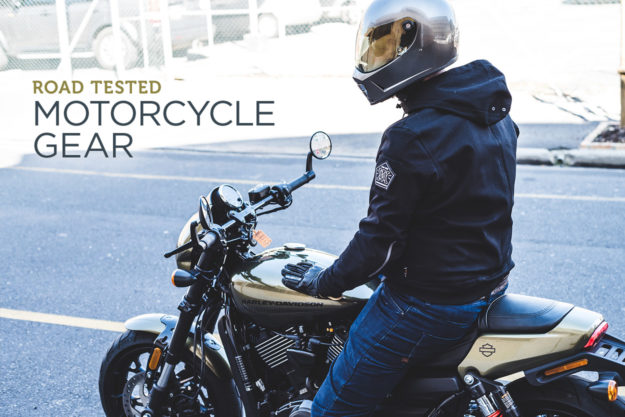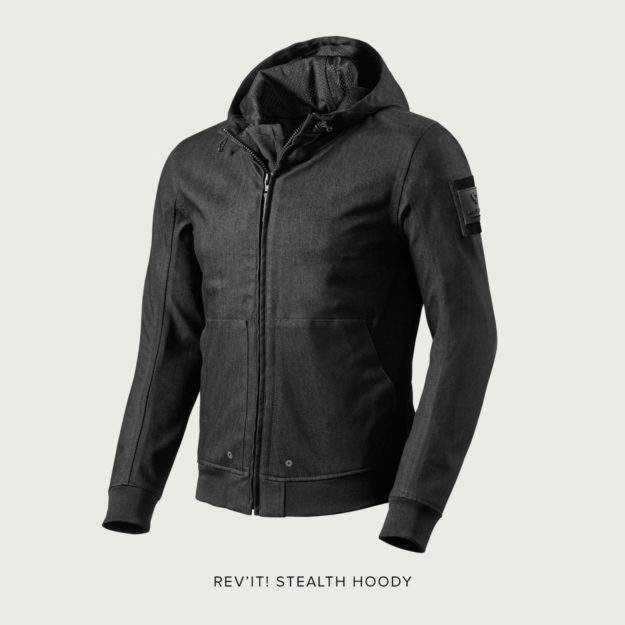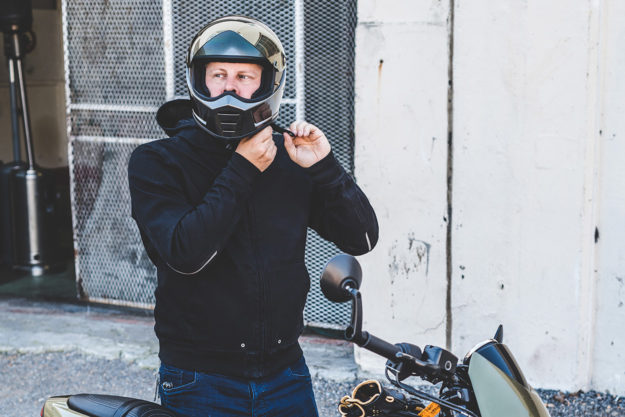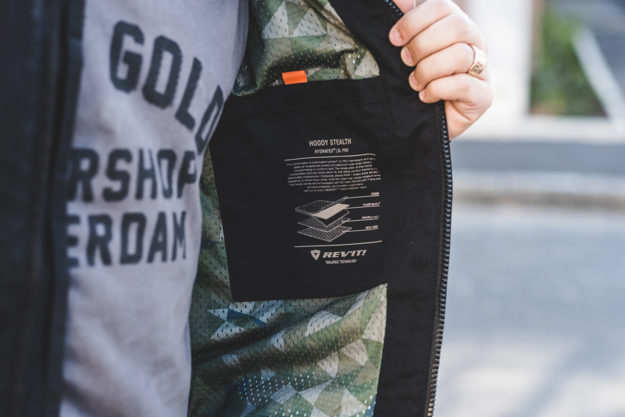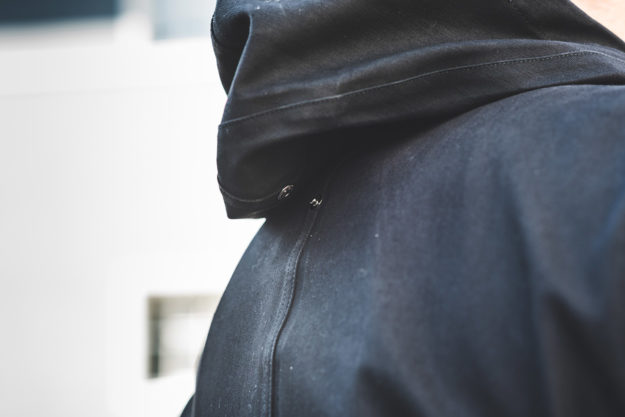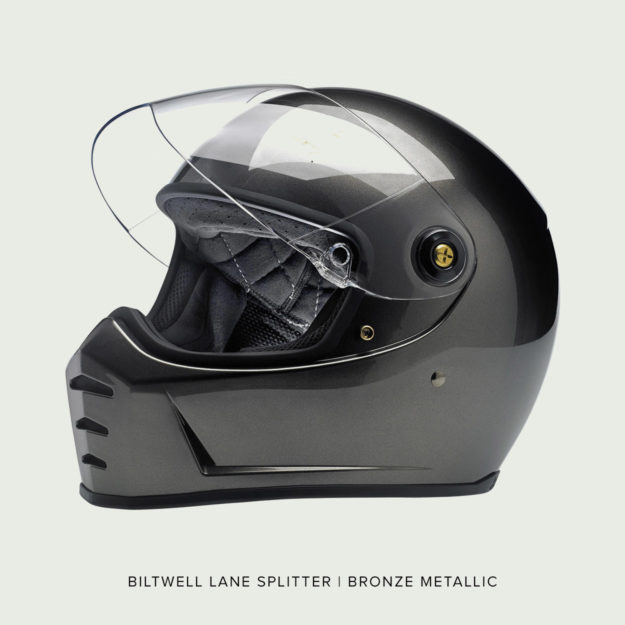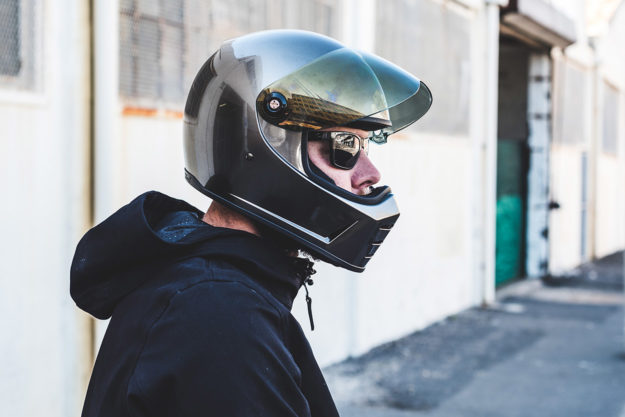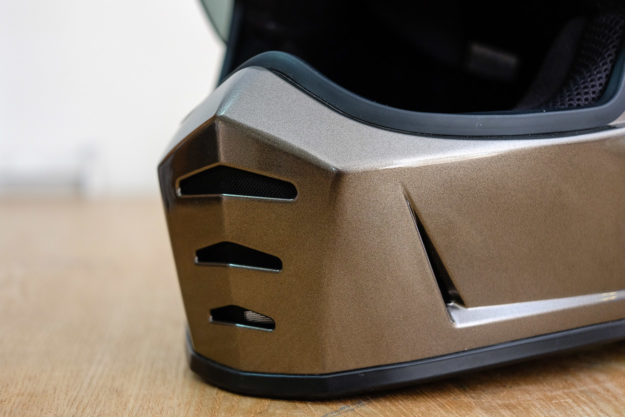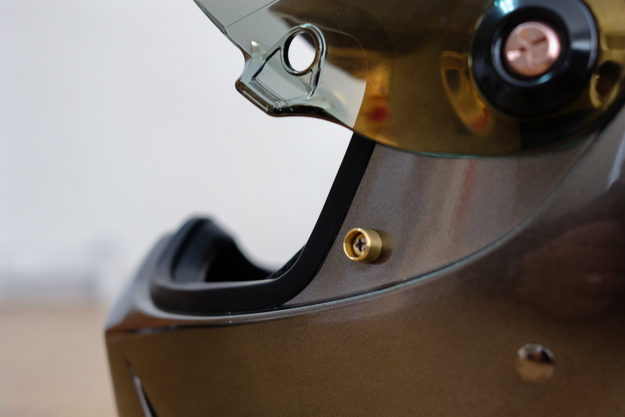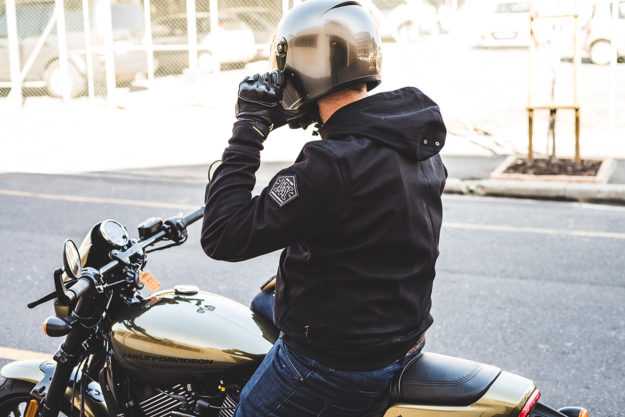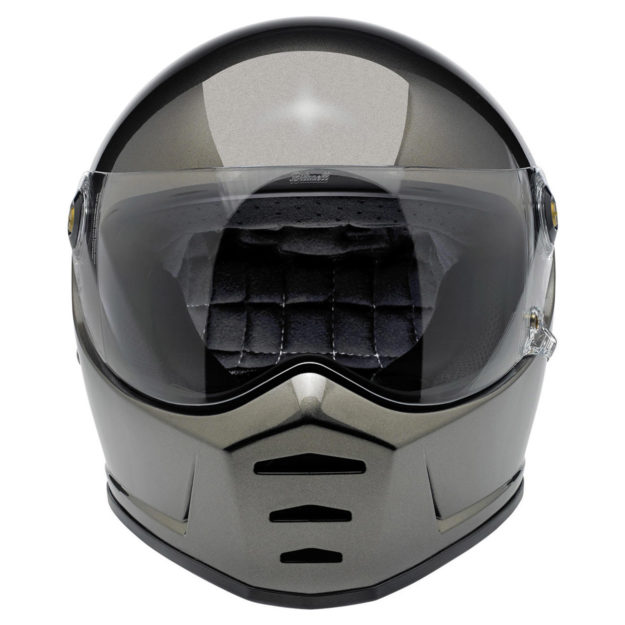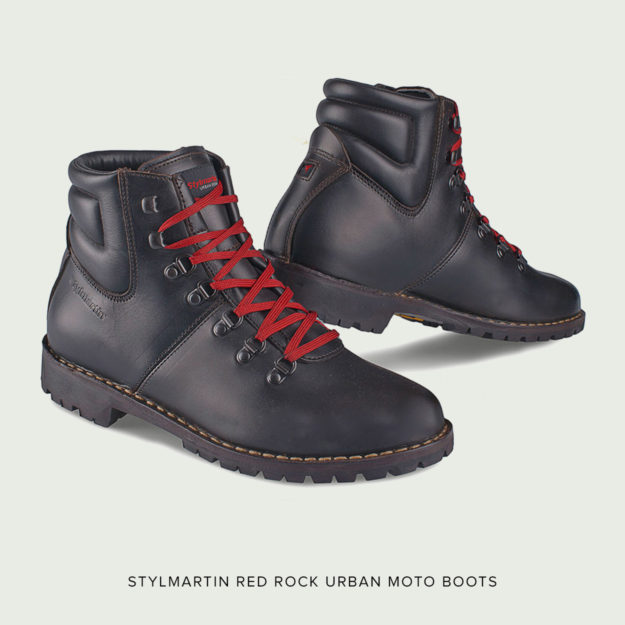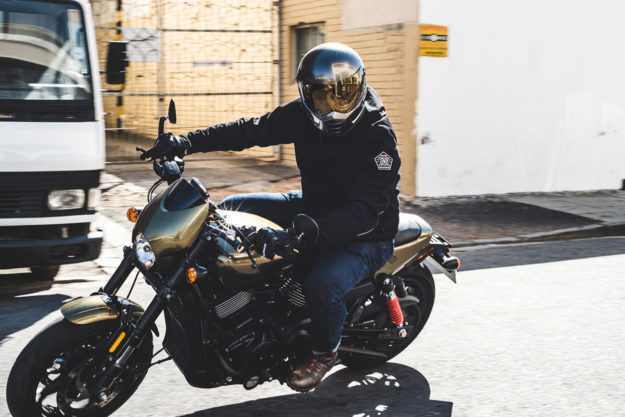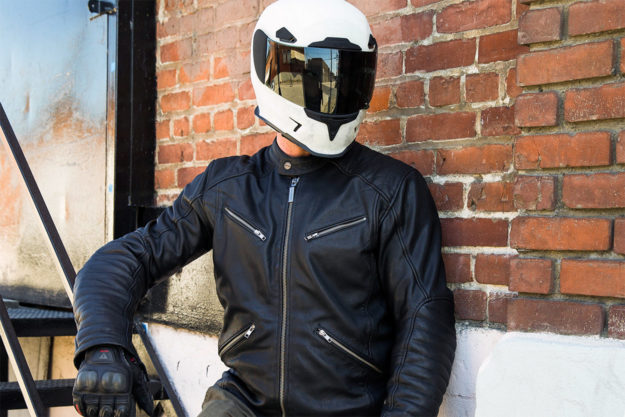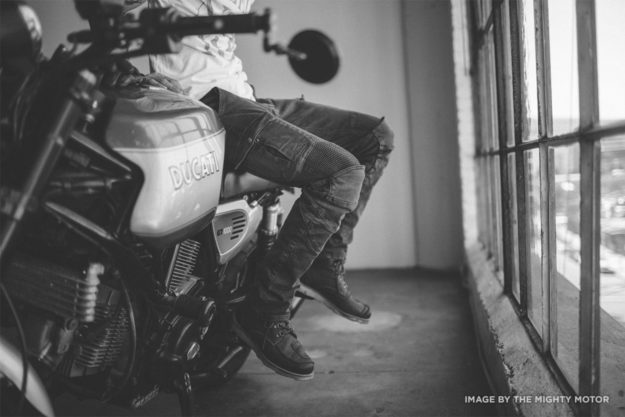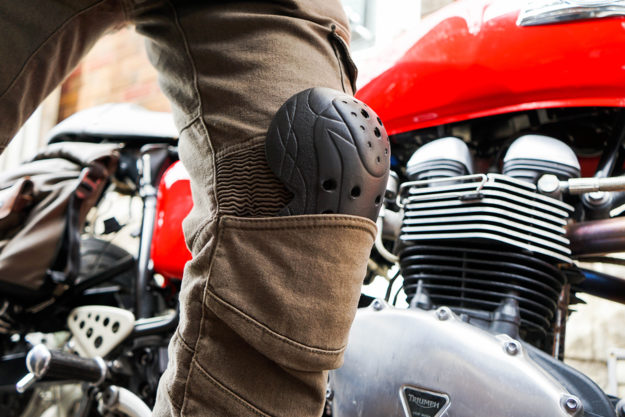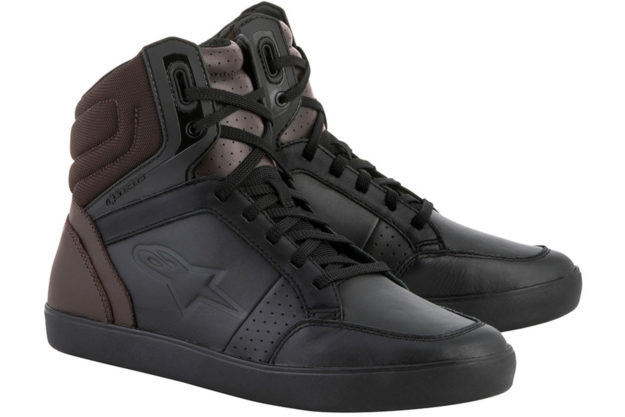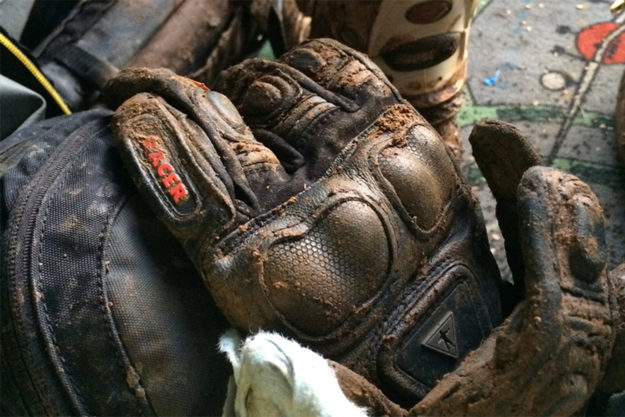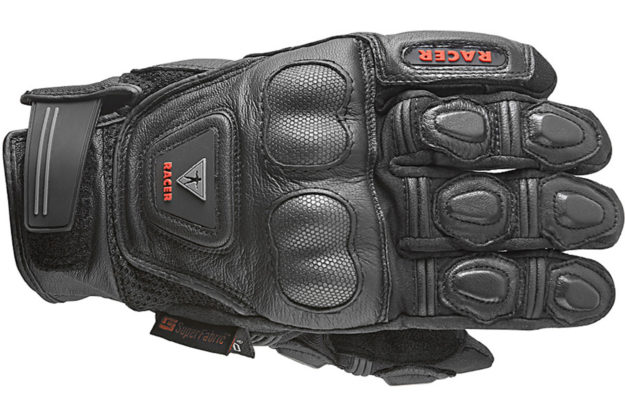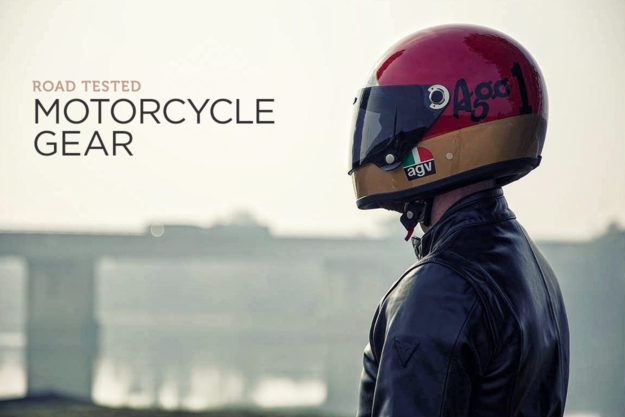
We all love retro looks crafted with modern materials. This time around we’re checking out new gear with classic styling from AGV Helmets, Aether Apparel and Pagnol Motor.
AGV X3000 Helmet Not long ago, finding an old-school helmet meant trolling garage sales for something old, smelly and downright unsafe. Now, ‘vintage-inspired’ buckets are everywhere—but not all of them actually deliver the goods. Some sacrifice safety, fitment or comfort in pursuit of style; the AGV X3000 doesn’t.
The $460 X3000 is an extremely attractive retro lid, shaped to accurately resemble the helmet Agostini donned while laying waste to 15 World Championships. The thinner, sculpted chin bar that Ago insisted on for a tighter tuck is the only design detail that really sticks out.
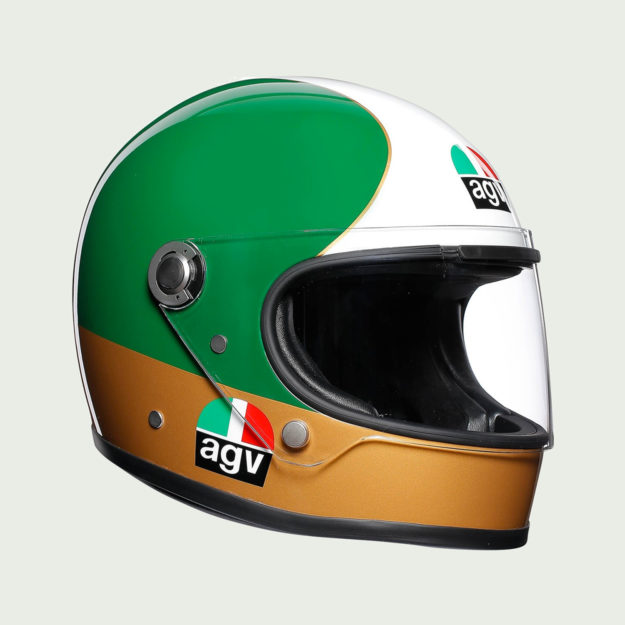
Otherwise, the ACF (Advanced Composite Fiber) shell is clean, minimal, and devoid of any unnecessary frippery or bling. And thanks to AGV employing three different shell castings, anyone with a noggin smaller than Wes’ can avoid the bobblehead look (just kidding mate, you looked stunning at DGR).
The X3000’s inner EPS foam liner is also available in three sizes, so that means in-between fitments are a possibility. My 57.5cm skull typically borders between medium and large, so I went with AGV’s ML size.
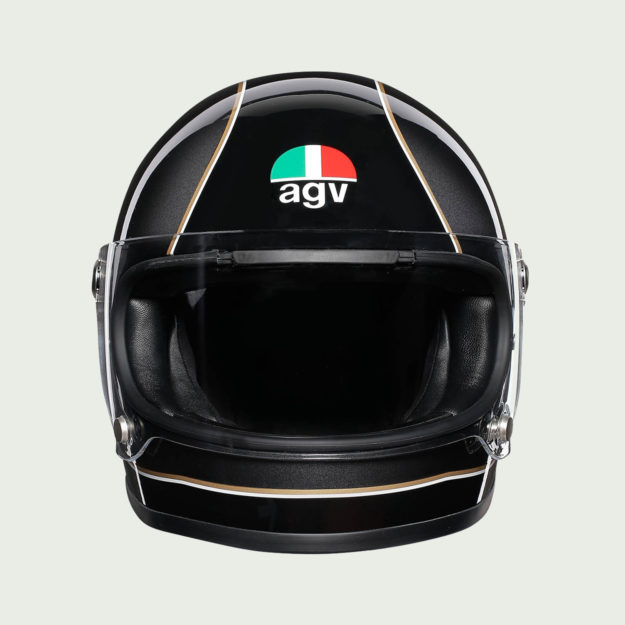
The fit is comfortably snug, and I’ve yet to discover any ‘hot spots’. Not only does this better fit make for a safer lid, the materials also help the X3000 achieve relative lightness. Mine tipped the scales at 1,425 g—some 50 g less than my Bell Bullitt.
Lined in microsuede and genuine leather, the interior is a plush affair. It’s also surprisingly quiet, relatively speaking. Compared to a proper modern helmet, things are still a touch rambunctious at speed, but noise levels are nowhere near as cacophonous as other efforts in this category (cough, Bell Bullitt, cough).
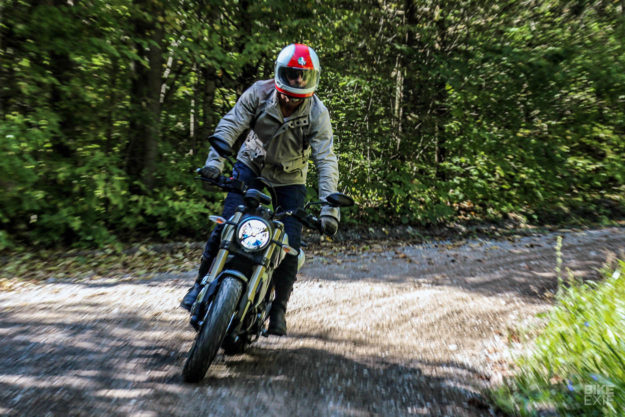
Credit the visor for that. In re-developing the X3000, AGV went to decent lengths to create an air- and water-tight seal. A rubber dam lines the entire eye port, so that when the visor is locked via the button clasp on the left side, noise and buffeting are kept to a minimum.
As for ventilation, peel away the rubber ‘switch’ at the top of the scratch-resistant visor, and air enters into a quad set of ducts that flow through the EPS liner, around the peak of your cranium. It’s a rudimentary system to be sure (no closing vents on the fly here), but it’s effective at providing relief on a hot day. The literature that accompanies the X3000 indicates that there is a ‘storage slot’ of sorts for the rubber somewhere inside the chin bar lining but I couldn’t find it, and have since lost said rubber anyways.

The only real downside is the price. As has become customary with all things that stir nostalgia, the X3000 doesn’t come cheap; especially if the Ago #1 graphic is a must have for you. There are plenty of quieter, lighter, comfier and more aerodynamic lids to be had at friendlier sums—but none of them look nearly as cool. AGV has done a commendable job in reducing compromises where it counts most, and this is the best performing vintage lid I’ve tried yet. [Buy]
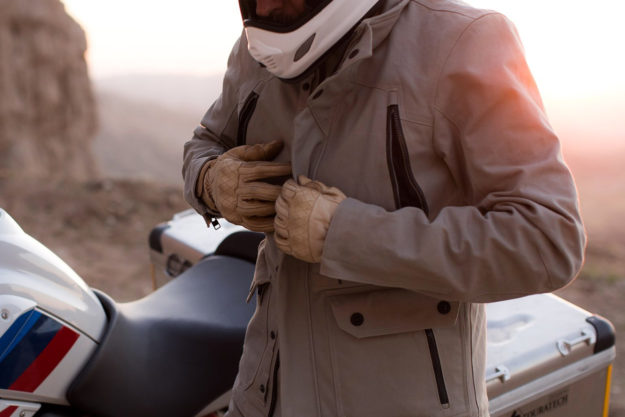
Aether Apparel Mojave Jacket Billed as their ‘warm weather’ jacket, Aether Apparel’s Mojave was designed by the LA-based company to focus on maximum airflow, to keep riders cool in sweaty extremes.
Luckily this summer was one of the hottest and stickiest in recent memory in my home town of Toronto, and ‘the 6ix’ also lays claim to the longest commute times in North America.
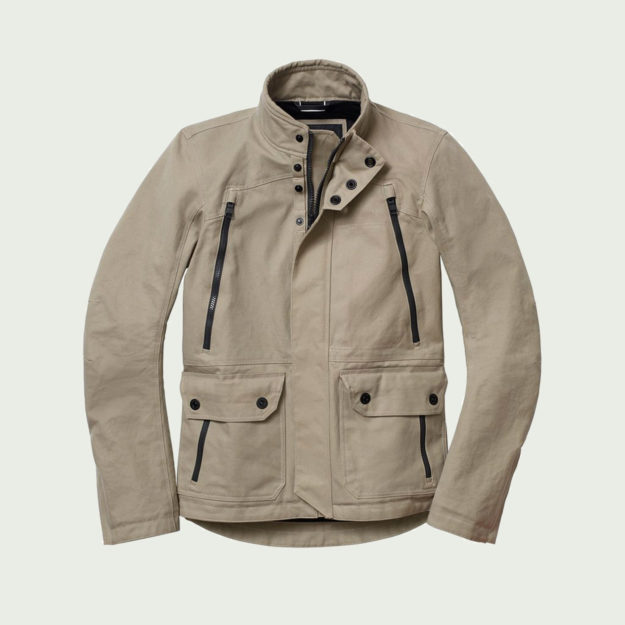
That means a good chunk of my time riding these past few months has involved steamy, flatfoot straddling amongst the caged masses; the perfect conditions to test the $550 Mojave.
Constructed of beefy swatches of Halley Stevensons cotton, the Mojave feels more robust than the mesh-type textiles usually associated with summer riding. The fit is rigid, boxy and not at all like previous Aether efforts I’ve worn in the past. A part of me loves this, as it means the Mojave should age gracefully and stand up to some serious abuse—but ultimate comfort will require a break-in period.
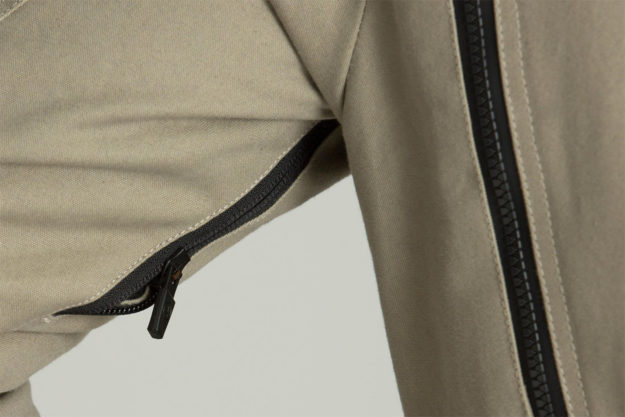
There are two large zippered vents running from shoulder to gut up front, two more linking armpits to elbows, and another set flanking the included D30 back armor. With each new iteration of their riding gear, Aether gets better and better at nailing the functionality of their vents.
On a wide set of bars with elbows out, four gaping intakes suck air in around your torso to cool your core, while those at the rear expel any trapped heat. This system works extremely well while seated and even better standing on pegs. Aether has even moved to D30’s LP1 perforated collection of armor for this kit, to help eliminate hotspots at the impact zones.
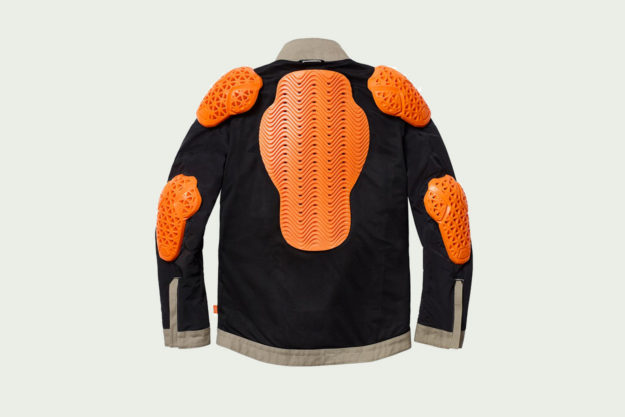
Of course once you grind to a halt—whether on the trail or in gridlock—things will heat up in a hurry. The mesh lining helps to wick sweat, but vents or no vents, you’re still just a guy wearing a jacket in the summer, sitting on a heater.
Regardless of exterior temperatures, the Mojave remains a well executed jacket for riders with plenty of thoughtful touches. All button clasps on the pockets and up the storm flap have integrated thumb loops that make closing them easy with gloves on.
Any hard parts that can touch a tank are shielded by fabric, and all of the YKK zippers have a fat, accessible pull. The main zipper is also of the two-way variety, so you can make adjustments to avoid the dreaded ‘billow effect’. And there are pockets-a-plenty for storage, with two at each side, an interior cell phone stash and one at the small of the back.
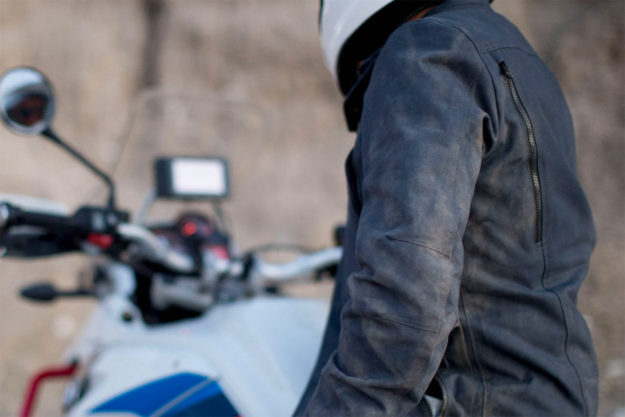
From a styling standpoint, the Mojave stands out by how stealthily it blends in. This is a calling card of Aether’s ethos and I’ve received more than a few compliments on this jacket from non-riders. Thanks to its minimal design and near total lack of branding, you could easily ditch the armor and wear this as a fall/spring jacket off the bike.
That said, I do have a few gripes. Due to the stiffness of the neck fabric, when it’s zipped up tight it feels abrasive. The collar is padded with a ¼-inch roll of the same canvas around the rim, which does soften after time—but a gentler fabric, like the smooth tricot liner used on other Aether jackets, would ensure comfort right out the box.
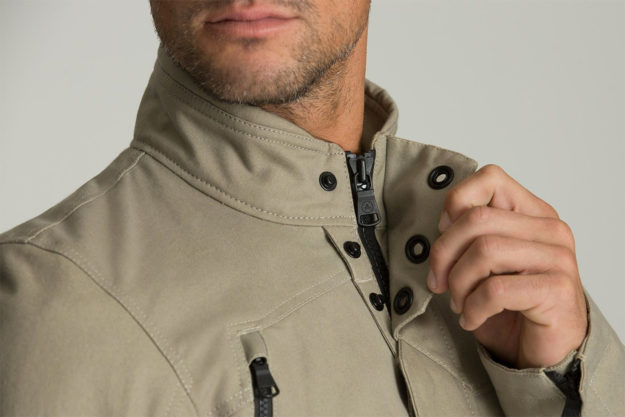
Many of Aether’s previous moto offerings also featured integrated reflectivity, via the stitching, or a tiny stretch of piping. That’s not included on the Mojave, which is an oversight but far from a deal breaker.
If, like Wes and Chris, you live on the south side of the equator, the Mojave is a decent choice for your upcoming summer running. If not, know that the fit is ample enough to squeeze in a warming layer of PrimaLoft. And those vents zip up pretty quickly, too. Take your pick between Dark Sand and Graphite colorways. [Buy]
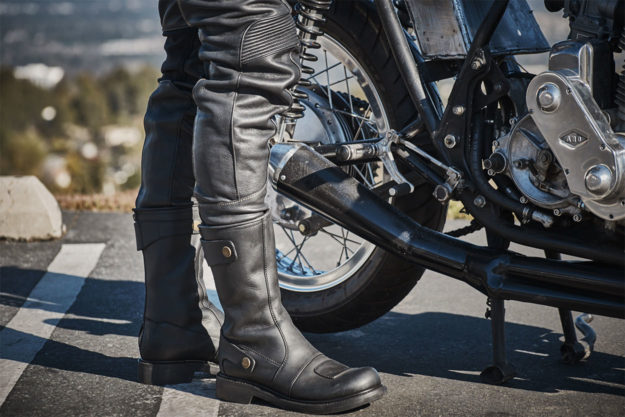
Pagnol Motor P1 Boots Much like the lads behind Aether, Paulo Rosas of Pagnol Motor has a keen eye for detail—and an Aprilia V4 pumping blood through his veins. So when he teased me with renderings of a prototyped riding boot, I pleaded with the man for a chance to try them out.
Finished in a supple matte black cowhide leather, the $340 P1 Moto Boot definitely draws inspiration from the sh*t-kickers of yesteryear. Part para-jumper, part traditional riding boot, the P1s are cut high and have a thick, durable Goodyear welt sole.
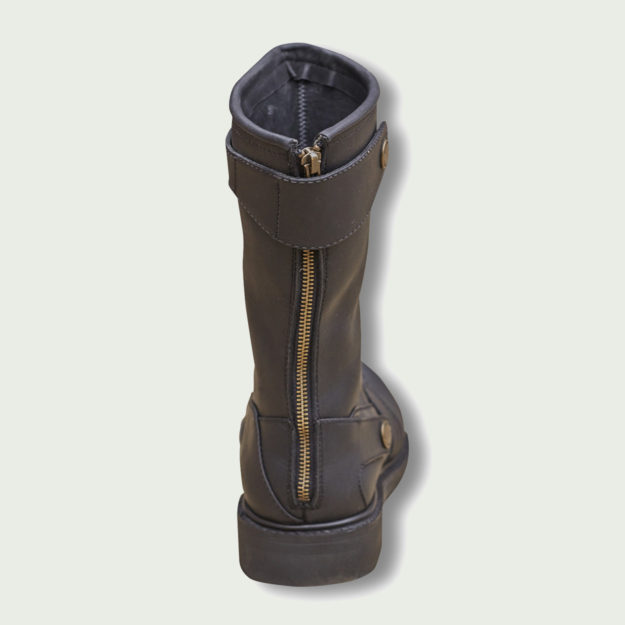
Sliding into the P1s is a simple affair thanks to a single zipper along the calf of the boot. By moving the zip from the more traditional spot on the inside leg to the rear, Rosas has made a boot that you can essentially step into before pulling snug. This may not seem like a revelation, but trust me; it’s a far more dignified way to get suited and booted.
Once your tootsies are comfortably positioned, the heavy-duty YKK zip can be tugged up with a gloved hand via a leather tassel. A button clasp secures a cuff at the top to make sure things don’t loosen up on the road, and all of the hardware is finished in antique brass.
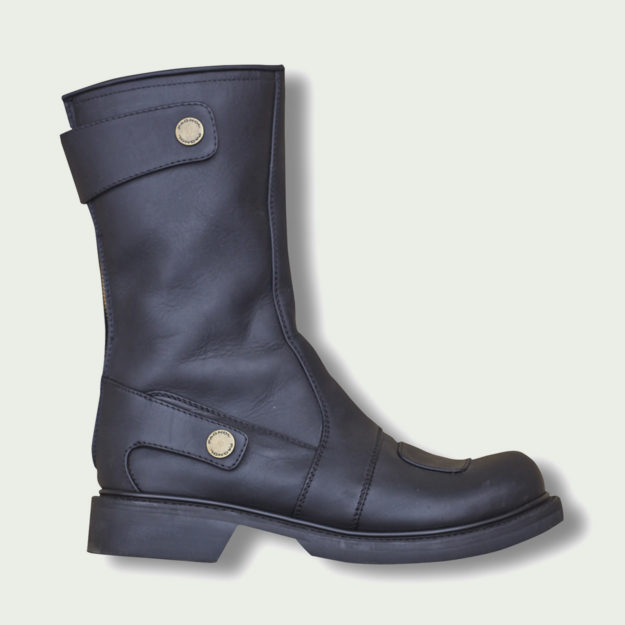
There’s a second decorative slice of leather at the base of the boot, to balance out aesthetics, and both the left and right sides have been outfitted with leather shifter guards. This may seem redundant, but from a styling standpoint I prefer the symmetry.
The all-leather upper is lined in pigskin to deliver a soft feel on the inside, and the whole thing has been sized to wear just as easily under a cuff as it does with pants tucked in. I tend to reside in the former camp and even when wearing a slim-fit jean, it doesn’t impede that stealthy approach. The one thing I did notice is that a taller sock (that stays in place) is a must have; after some trail riding, my socks slid down and the cuff of the boot started to rub.
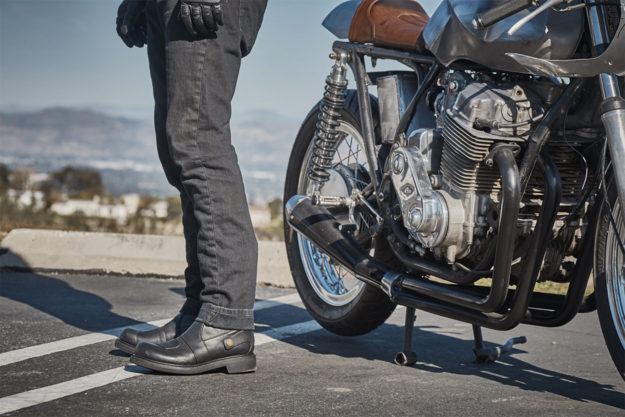
Outside of that gaff, the P1 boots are plenty comfy. The anatomic footbed is soft yet supportive and there’s even a smidge of arch support. If you’d prefer to run with your own insoles, the stock ones are removable. The toe box is ample, and provided you don’t typically rely on Nike Air Monarchs to accommodate your above average girth, you should have no problems with standard sizing here.
Thanks to the suppleness of the leather, there’s really no break-in needed with these, either. If you’re used to Red Wings, Dr. Martens or something similarly stiff, the P1s will feel effortless both on the bike and off.
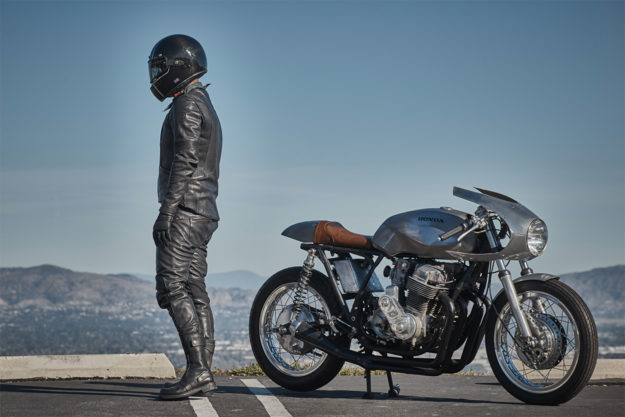
On the safety side, there is integrated ankle padding on both sides, and that cowhide is some pretty stern stuff. I would have preferred something with a CE-rating for my malleoli and, because of the trick access method, you lose out on a true reinforced heel.
At $340, the P1 is a reasonably priced riding boot that is well made and has a timeless look. A quick coat of Nikwax will weatherproof everything, and I imagine I’ll be getting miles out of mine over the years. Well done, Paulo! [Buy]

